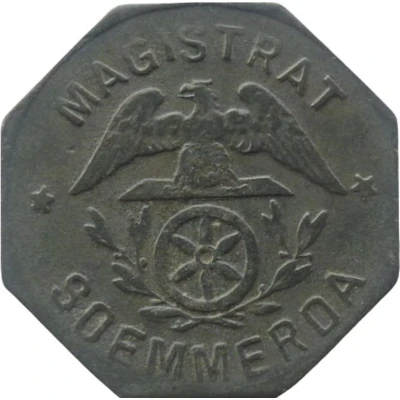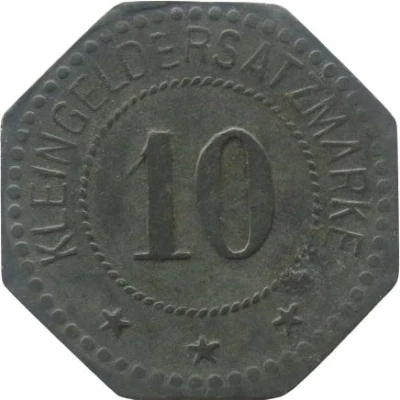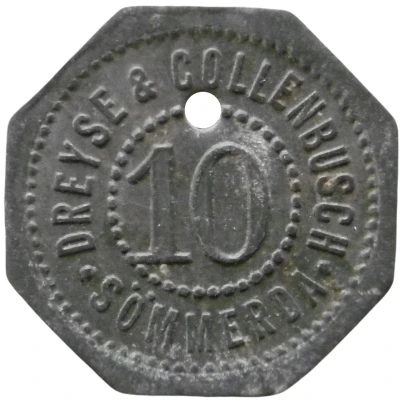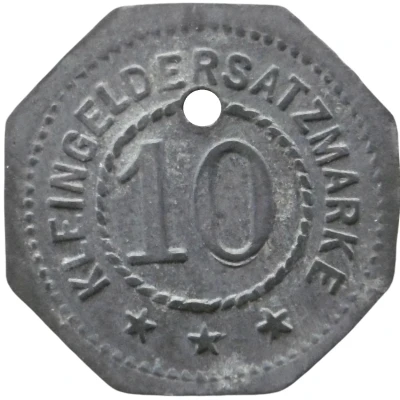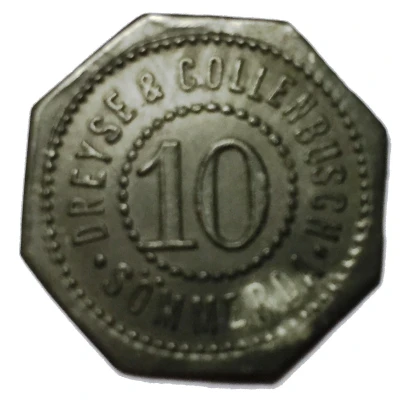
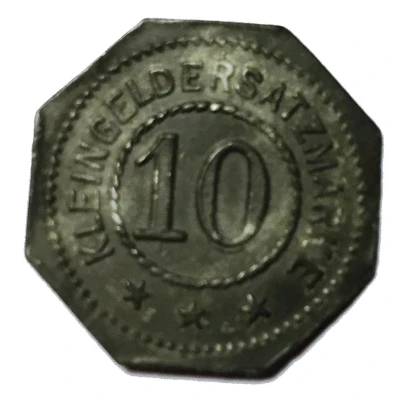

© Christopherus13
10 Pfennigs - Sömmerda (Dreyse and Collenbusch) ND
| Zinc | 1.6 g | 18.9 mm |
| Issuer | City of Sömmerda (Prussian province of Saxony) |
|---|---|
| Type | Standard circulation coin |
| Value | 10 Pfennigs (10 Pfennige) (0.10) |
| Currency | Mark (1914-1924) |
| Composition | Zinc |
| Weight | 1.6 g |
| Diameter | 18.9 mm |
| Thickness | 0.9 mm |
| Shape | Octagonal (8-sided) |
| Technique | Milled |
| Orientation | Medal alignment ↑↑ |
| Demonetized | Yes |
| Updated | 2024-10-04 |
| Numista | N#92590 |
|---|---|
| Rarity index | 94% |
Reverse
Denomination centered
Script: Latin
Lettering:
KLEINGELDERSATZMARKE
10
★ ★ ★
Edge
Plain
Comment
Menzel: BBBFa.: Munitionsfabrik und Gasanstalt
Interesting fact
One interesting fact about this coin is that it was minted during a time of economic turmoil in Germany. The 10 Pfennigs coin was introduced in 1923, during the hyperinflation period that followed World War I, when the value of the German mark had dropped significantly. The coin was made of zinc, a relatively inexpensive metal, due to the shortage of other metals at the time. Despite its low value, the coin was still widely used in everyday transactions and became a symbol of the economic struggles of the time.
